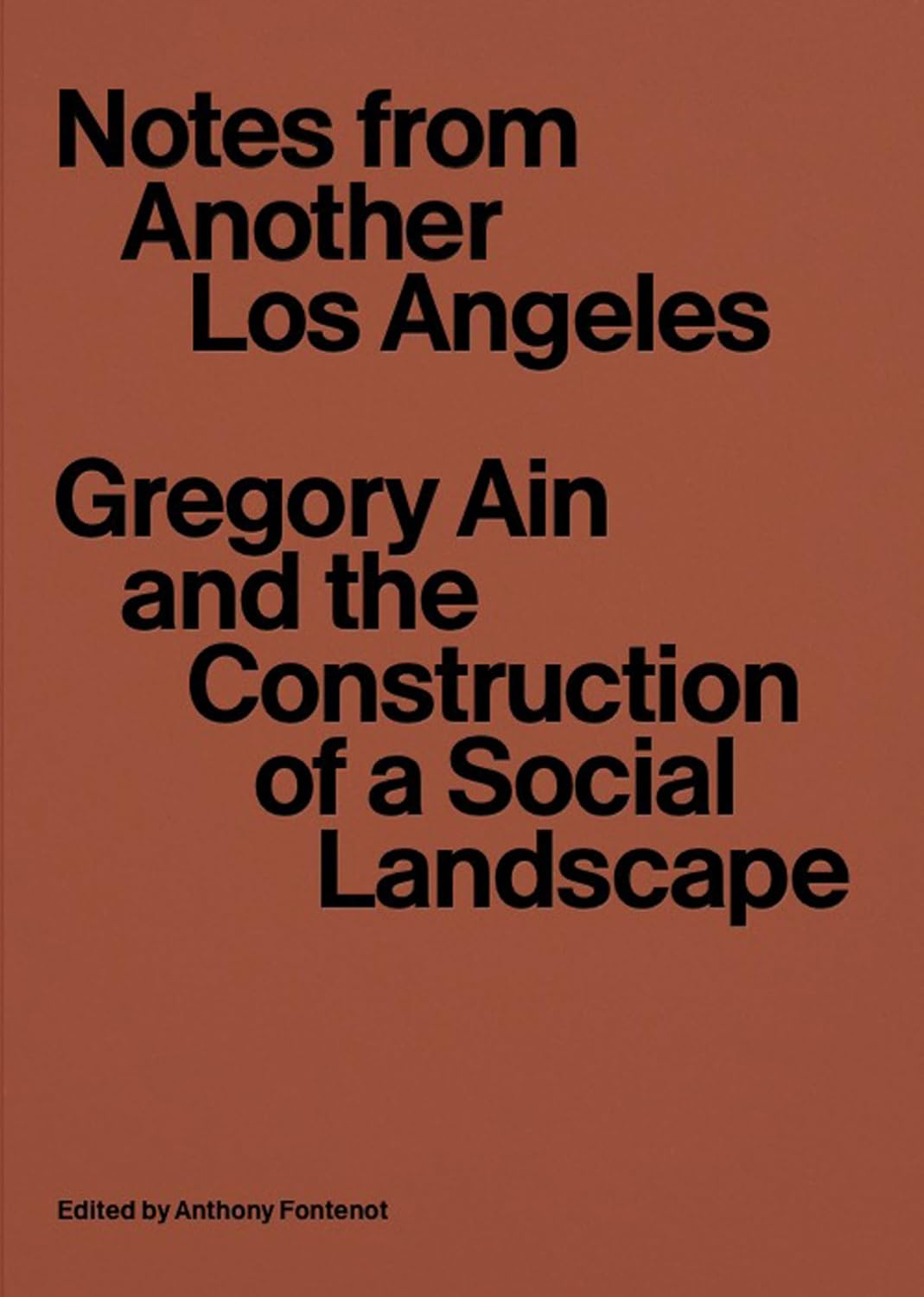After Ain began his own firm in 1935, at the age of 27, one of his first projects was to design a housing for farmworkers, who since 1930 had been striking intermittently in the lettuce and cotton fields throughout Southern and Central California, protesting low wages and inhumane working and living conditions. Ain’s homes for workers were conceived around prefabricated parts that were easy to deliver and assemble; he also included a master plan for laying out the homes that prevented homogeneity. Although the project was never constructed, it featured many of the same elements that Ain would later apply to other developments, including placing the driveways of adjoining lots next to each other to activate “‘social space’ by creating conditions whereby neighbors could casually communicate with one another as they moved from car to house.” This placement also blurred the lines of private and public property, another signature of future projects like Parked Planned Homes (1947) in Altadena. Ain, in collaboration with Eckbo, dispensed with fences and hedges in front of houses within the 28-home development, in favor of producing a continuous parklike streetscape.
One Family Defense Housing, as the farmworker plan was called, is early evidence of Ain’s political commitment. Anthony Denzer’s fascinating contribution to Notes From Another Los Angeles, an essay unpacking Ain’s voluminous FBI file, goes further in revealing the frenetic scope of his political organizing and activity. He was a member of a labor union, the Federation of Architects, Engineers and Chemists, as well as civil rights organizations like the Hollywood Independent Citizens Committee (which lobbied for New Deal causes and world peace), the Civil Rights Congress (a racial justice group), and the Los Angeles Committee for Protection of Foreign Born (devoted to fighting the deportation of people accused of communism), among others. All of these groups, at various times, were perceived as communist fronts.
At the height of the FBI’s investigation into Ain, Denzer writes, the bureau had at least 21 informants gathering information on him. Some were former coworkers at the Eames company, where Ain worked during World War II, and some were even confidants of his family, such as his babysitter, who went to the FBI in 1950 to report that she believed Ain and his wife, Ruth, were members of the Communist Party. (Her reasons ranged from the leftist newspapers they had in their home to the vague sense that they appeared to be in “some sort of group” with people who were “not close neighbors.”) By the time the babysitter became an informant, Ain had been on the FBI’s radar for years, even appearing on J. Edgar Hoover’s Security Index, a classified list of dangerous subversives. Hoover went as far as to label him “the most dangerous architect in America.” Ain is likely to have first garnered attention when he visited the Soviet Consulate in 1944 to obtain information for a lecture on Soviet architecture that he delivered at UCLA (which an FBI agent, of course, attended). The bureau worried from then on that he was a Soviet spy.
